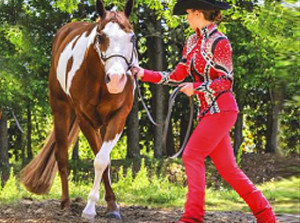Ask the Experts – Training for Picture Perfect Pivots
Click here to read the complete article186 – November/December, 2017
By Erica Greathouse
 Any savvy competitor knows that the pivot is an essential maneuver for any pattern class, and the proper or improper execution of this maneuver can make or break the final result of a class. Although it might seem like a simple skill, the pivot has many moving parts and can quickly go awry if a rider’s technique isn’t in sync or a horse’s training isn’t executed properly. Read on as our experts cover everything from how to train a green horse to fixing common problems that arise with finished horses.
Any savvy competitor knows that the pivot is an essential maneuver for any pattern class, and the proper or improper execution of this maneuver can make or break the final result of a class. Although it might seem like a simple skill, the pivot has many moving parts and can quickly go awry if a rider’s technique isn’t in sync or a horse’s training isn’t executed properly. Read on as our experts cover everything from how to train a green horse to fixing common problems that arise with finished horses.
The Fundamentals
All of our experts agree that having the proper foundation for the pivot is crucial and will be revisited throughout a horse’s show career. During this process, teaching proper body control and footwork is essential.
According to John Briggs, trainer of multiple World and Congress Champions, putting a green horse in a bit allows a rider to take hold of the face and promote flexion without intimidation. “I work in a circle at the walk, and I want the horse to arc their shoulder in the direction of travel and move forward willingly while lifting their shoulder at the same time,” Briggs explains. As a horse gets more coordinated with his footwork, Briggs will wind down into a turn and allow a few steps of the pivot before pushing forward back onto the circle. “If a horse loses momentum or position, I make sure to get out of the turn and manually put them back into position and back on the circle,” he says. While focusing on maintaining correctness of the front end, control of the horse’s hind end is also a key part of the equation when it comes to achieving a credit-earning pivot. “You should feel the horse’s hip to the inside and not leaning on your leg. If they push their hip out, I will side pass them off my leg for a few steps to reinforce that position and then send them forward again.” According to Briggs, key factors to keep in mind are forward motion, body control, and responsiveness. “The horse should always be respectful of your hand and leg cues,” he says.
Click here to read the complete article186 – November/December, 2017










